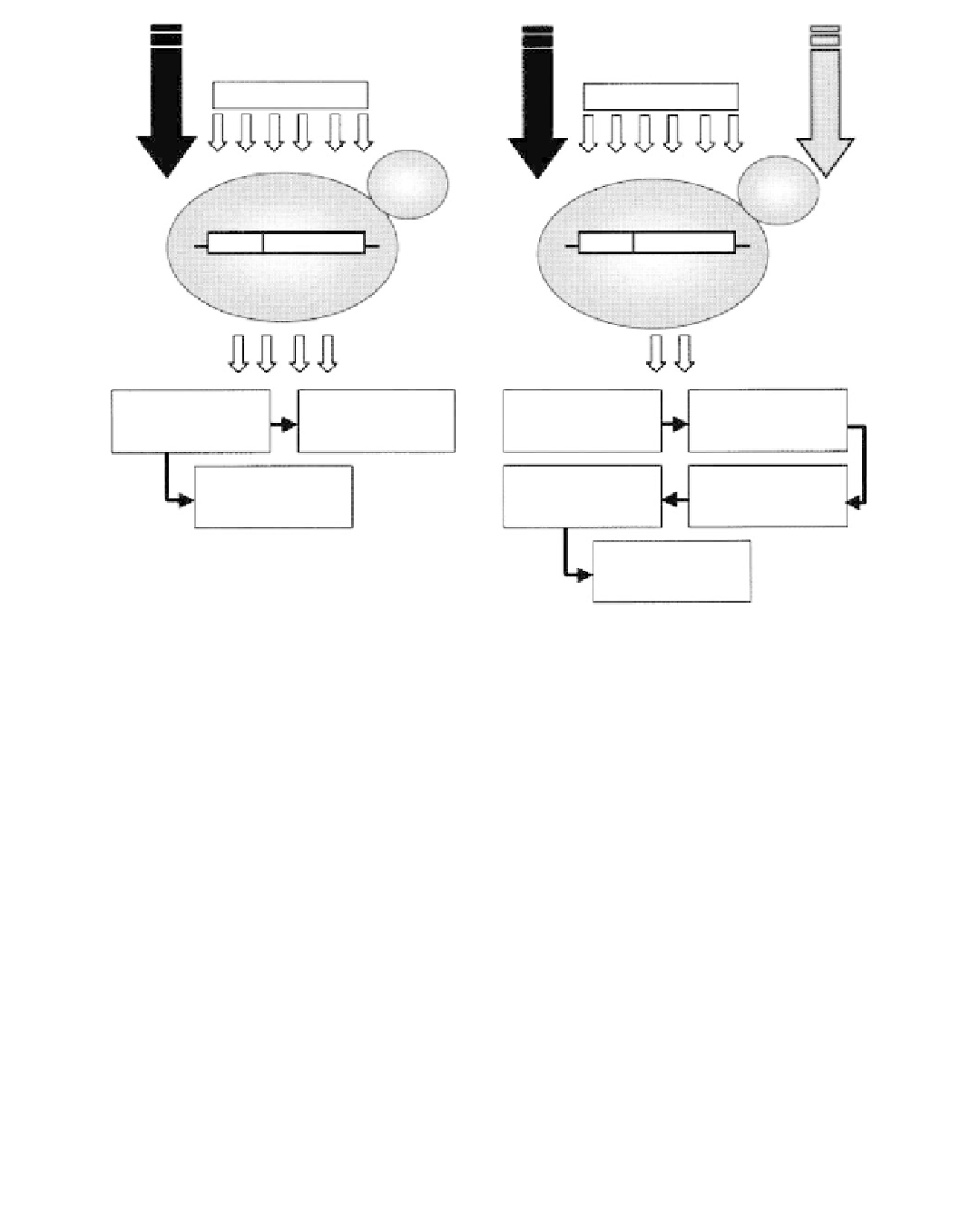Biomedical Engineering Reference
In-Depth Information
Oxygen
Oxygen
CUP1
p
lac Z
-gene
CUP1
p
lac Z
-gene
Lactose
conversion
Steady-state
oxygen consumption
CUP1
promoter
induced
CUP1
promoter
not induced
Higher
metabolic activity
Increase in oxygen
consumption
No signal
Signal
FIGURE 14.4
Principle of the Cu
2
+
measurement. (From Lehmann, M., Riedel, K., Adler, K., and Kunze, G.,
Biosens. Bioelectron.
, 15, 211, 2000. With permission.)
A. adeninivorans
in the hydrogel poly(carbamoyl)sulfonate (PCS), and the immobilized yeast mem-
brane was placed in front of an oxygen electrode with
600 mV versus Ag/AgCl. The novel sensor
makes it possible to monitor different types of wastewaters rapidly without pretreatment, and it can
be used for an active process control of sewage treatment works [126].
−
14.1.2.14
Torulopsis candida
T. candida
as a yeast can promote hydrocarbon to produce proteins. It is found that
T. candida
can
assimilate a wide spectrum of organic compounds as an attractive alternative for
T. cutaneum
in
BOD biosensor. Sugandhi et al. [127] employed
T. candida
to fabricate a BOD biosensor and evalu-
ated it in the batch mode as well as under fl ow conditions.
14.1.2.15
Pichia methanolica
P
.
methanolica
MN4 cells can be used to produce large amounts (up to 30% of the total protein
of the cell) of highly active alcohol oxidase. Reshetilov et al. [128] developed such a biosensor by
immobilizing
P
.
methanolica
on chromatographic paper and fi xing on a Clark-type oxygen elec-
trode. Of all substrates tested (ethanol, methanol, isopropanol, glucose, xylose, xylitol, arabinose,
arabitol, glycerol, pyruvate, citrate, and acetate), the
P
.
methanolica
-based biosensor had a higher
selectivity and was susceptible only to ethanol, methanol, and insignifi cantly to isopropanol.

